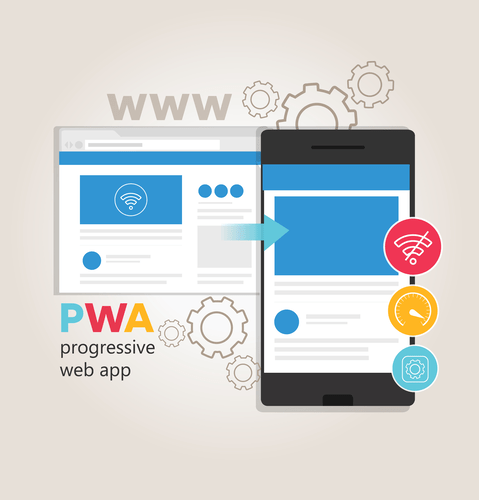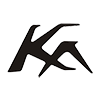We’ll additionally delve into a real-world case research of Texas Mutual Insurance Company, which successfully adopted this strategy to enhance their operational agility and market responsiveness. Join us as we uncover the transformative energy of a product-centric mindset and how it can propel your group into a future of sustained development and innovation. In this mannequin, product development follows Agile methodologies corresponding to Scrum or Kanban.

Cultivating a tradition of steady enchancment, where teams frequently reflect on their processes, learn from successes and failures, and try for incremental enhancements. Essentially what occurs is that we could empower a unit to run such an extension platform and let an exterior third get together extend our product, letting the user work together with such extensions. Subsequently, we could actively combine part of the experience that the extension provided to turn out to be a half of the bounded context of the “official” product itself. The same elements might then evolve – some of them turning into elementary capabilities – as the entire product evolves in course of a better value system. Progressively, components could be remodeled into utilities (such as APIs) that, in turn, can be offered back to the developer ecosystem (see the pic below).
Productization Is A Pervasive Pattern
A team that organizes itself around achieving an outcome as a substitute of simply delivering options might be way more in sync with the users’ needs, thus guaranteeing that the consumer is on the center, not the product. In February 2023, Marty Cagan announced his new guide, “Transformed” on the SVPG blog. Rather than solely focusing on the responsibilities of product managers and product leaders, his guide explores how companies can efficiently embrace the Product Operating Model. Texas Mutual’s case study serves as a testomony to the effectiveness of adopting a product operating model. For a extra detailed exploration of their transformation, readers are encouraged to review the total case examine. Cprime provided coaching, tooling analysis, and custom training, that are crucial parts in building the competencies required for a product-centric approach.
When the group is unable to discover a answer, a impasse state of affairs may ensue, as antagonic views scale the corporate ladder. That’s why it’s so necessary that outcomes are shared across the complete company, not just inside groups. And who’s the one inside a corporation answerable for gathering and disseminating knowledge? The paragon of enterprise in a tech dominated land, the bridge between the ones who construct and those who sell?
Making A Governance Model
To tackle talent gaps, companies often find it essential to reskill present workers or rent further talent. Few organizations make use of sufficient know-how specialists with expertise throughout these disciplines, so they must both practice the people they’ve or bring in new people who have expertise as product managers or product owners. By integrating these finest practices into their operations, organizations can’t solely improve their current merchandise but in addition set the stage for future innovation and growth. In the subsequent section, we’ll explore how constructing a tradition of innovation and excellence is integral to the success of a product working model. The Product Operating Model promotes collaboration and alignment across cross-functional teams involved in product improvement, together with product management, engineering, design, marketing, and sales. This collaboration fosters innovation, knowledge sharing, and collective problem-solving, main to raised outcomes and extra revolutionary merchandise.

Our evaluation exhibits that high corporations when it comes to product and working model maturity have 60 % higher whole returns to shareholders than bottom-half corporations and 16 percent larger operating margins (Exhibit 1). Leaders who embrace innovation and demonstrate a dedication to excellence can encourage their teams to do the same. Recognizing and rewarding innovative efforts can reinforce a tradition of creativity and risk-taking. Whether via formal awards, bonuses, or public acknowledgment, celebrating successes can encourage teams to continue pushing boundaries. This means not only hiring expert individuals but additionally making certain they proceed to be engaged and motivated via a positive work setting and clear career progression paths.
Product Operating Mannequin Roles
An empowered team is a group that lacks direct administration not by design, however by necessity. Multidisciplinary groups are supposed to leverage several different specialities in harmony and direct hierarchical management only damages that. Also known as the “Spotify squad model,” groups that arrange themselves around outcomes should be multidisciplinary by default, since no single speciality will be in a position to tackle complex issues all by itself. Project mode can be extra suitable when the scope and necessities are properly understood, for example, in a pure tech migration or one thing physical like establishing a brand new retailer or constructing a manufacturing facility. However, with the velocity of change within the digital world, initiatives with well-understood scope and necessities at the second are few and far between. In this publish, we clarify how a framework based on nodes and agreements, the place the efficiency in executing those agreements…
- For instance, if you have alignment issues or gaps between technique and execution, begin by implementing a technique deployment framework, similar to OKRs (Objectives and Key Results).
- We’ll also delve into a real-world case examine of Texas Mutual Insurance Company, which successfully adopted this method to enhance their operational agility and market responsiveness.
- The product strategy outlines the course for the product, including its goal market, value proposition, and competitive positioning.
- That’s the surroundings during which the Product Operating Model thrived in, and extra traditional sectors of the tech business have finally began questioning this almost ubiquitous presence in modern management.
- By forming integrated teams to support merchandise and platforms, instituting constant governance processes, and establishing a standard system for prioritizing work, a know-how organization can increase the value it creates for a enterprise.
- Defining the long-term imaginative and prescient, targets, and roadmap for the product, aligned with the organization’s total strategy and customer needs.
These are examples of Product Operating Models, and organizations might adopt or customise these models primarily based on their unique necessities, market circumstances, and strategic objectives. A scalable Product Operating Model can adapt to the evolving needs and progress of the organization, allowing for the efficient scaling of product growth efforts. By providing a framework for managing complexity and making certain consistency in processes, the mannequin supports sustainable progress and long-term success.
The Method To Implement A Product Working Model
A platform team will normally regulate its ways of working to match the state of the underlying techniques and the wants of product groups and external partners. On most platform teams, the chief could have a technology background, and employees will mainly encompass know-how specialists. Many firms launch their digital efforts with a focus on creating and enhancing products by way of a stand-alone organization that is separate or siloed from firm IT. Combining digital packages and IT operations is also extra practical than different adjustments that enterprise leaders may consider as a part of a digital transformation. Executives generally assume that after their digital activities are operating nicely, the subsequent step of their digital evolution ought to be a far-reaching, potentially disruptive effort to reorganize the whole company and operate it in the manner of a digital native.
When it comes to innovation, the correlation is particularly strong with an organization’s tradition, talent administration, and tooling (Exhibit 4). Tooling encompasses planning and collaboration tooling, software program improvement tooling, and DevSecOps tooling, corresponding to continuous integration/continuous supply (CI/CD) pipelines. The product and platform mannequin brings together enterprise or product, know-how, operations, and different related functions (e.g., risk, legal, marketing, distribution) into groups centered on improving customer and user experiences and building companies for reuse. The Product Operating Model serves as a strategic framework that outlines how an organization designs, develops, and delivers its products or services to fulfill buyer wants and obtain business objectives.
Develops and executes advertising methods to promote the product, generate demand, and drive buyer adoption and retention. They conduct market analysis, create messaging and positioning, and collaborate with sales https://www.globalcloudteam.com/product-operating-model-definition-and-importance-for-business/ and advertising groups to launch and promote the product effectively. Comprised of engineers, designers, and different specialists liable for building and delivering the product.
One instance of a Product Operating Model is the model used by know-how firms to handle and function their software merchandise. Another example of a Product Operating Model is the model utilized by manufacturing companies to handle and operate their physical merchandise. Strong product teams measure success by buyer outcomes (for instance, buyer satisfaction score), monitor buyer knowledge rigorously, and use it for steady improvement. A product working model is a strategic blueprint that prioritizes buyer value, speedy innovation, and steady improvement. It’s an strategy that organizes teams, processes, and systems around the delivery of product and service offerings, somewhat than projects or momentary initiatives. By focusing on merchandise because the core drivers of worth, organizations can align their efforts more carefully with buyer wants and market demands.

By aligning the organization’s objectives and imaginative and prescient with the day-to-day activities and expertises, one can increase effectivity across the whole company. Product groups (or pods) develop and supply technology-enabled choices or services utilized by prospects and employees. Their quick and first purpose is to allow customers to carry out actions that create value.
Outcomes of the product operating model can range extensively throughout organizations and amongst adopting teams. Establishing baselines for every team’s efficiency earlier than and after adopting the product working model allows the group to set related and achievable metrics. The following chart illustrates a pattern of metrics that organizations can work towards reaching with a product working mannequin.
Development
A product-centric method depends closely on steady delivery and speedy suggestions loops. This allows teams to iterate quickly, reply to customer needs, and make data-driven decisions. It’s a cycle of construct, measure, learn, and improve that keeps the product and the enterprise evolving. In this submit, we’ll explore the essence of the product working model, its impact on enterprise efficiency, and greatest practices for implementation.
The strategy must be aligned with the organization’s strategic aims, ensuring that the product contributes to the achievement of those goals. Product planning involves defining the product’s course and making choices about its options, pricing, and target market. Product development entails creating the product, testing it, and making ready it for launch. Product launch entails introducing the product to the market and selling it to potential customers.
Texas Mutual initiated a pilot program that embraced agile methodologies, reflecting the best practices of fostering cross-functional collaboration and technical agility. This shift allowed for faster iterations and a extra responsive strategy to product growth. Competency in knowledge analytics allows teams to make informed decisions based mostly on real-time data. This consists of the flexibility to gather, analyze, and interpret knowledge, in addition to the capacity to use insights gained from knowledge to guide product strategy and improvements. “Implementing Product Operating Models in our company has significantly enhanced cross-functional collaboration and aligned our product growth strategies more closely with customer needs, leading to improved market responsiveness and innovation.” This model ensures that every one features of product development, from ideation to supply, are coordinated and centered on maximizing buyer value.
However, it’s important that these digital units and IT departments are closely built-in, with considerate coordination and planning between the organizations to forestall any bottlenecks. For occasion, as digital efforts expand to cover more buyer and employee experiences and incorporate new technologies, integration between digital and conventional technology options requires more in depth collaboration. Differences in tradition and methods of working can make it tougher for digital and IT groups to combine new digital choices with core techniques.
By gathering insights into person habits, market tendencies, and product efficiency, organizations can make knowledgeable selections that drive product success. The Product Operating Model supplies clarity on roles, duties, and processes, resulting in improved productivity and effectivity in product growth and delivery. Clear workflows, streamlined communication channels, and optimized resource allocation contribute to faster time-to-market and lowered time and price overruns. Through the adoption of finest practices, corresponding to agile methodologies and continuous enchancment, the Product Operating Model fosters a tradition of innovation and excellence. It offers mechanisms for gathering suggestions, iterating on ideas, and delivering high-quality products that meet or exceed customer expectations. What we obtain thus far is a picture where we now have unbiased product divisions (micro-enterprises) that could be organized autonomously internally primarily with the objective of adapting their working mannequin to the product outcomes they wish to generate.
